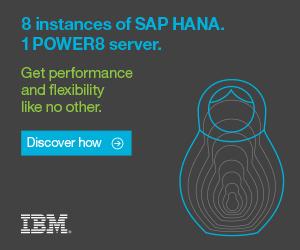FinTech and SAP HANA
on March 24, 2017

During the past few years, FinTech has emerged as a startup realm that is growing astronomically. In 2015, the EU alone experienced a growth of investment in FinTech of more than 215%, according to a report by Accenture. This new and disruptive technology scene is not only introducing new sectors, such as mobile payments and crowdsourcing, but it is completely disrupting legacy sectors, such as funds transfers and loans, areas traditionally held by big banks.



Although it may be more convenient to split the dinner check with a friend on your mobile device or to receive funding for a new venture in a matter of weeks versus the more traditional months it might take to secure a bank loan, when 40% of the London workforce is composed of financial and technology services, what are the implications of this emerging and highly disruptive technology?
To start, small-to-medium enterprises now can offer financial services at a much smaller price than ever before, which creates a virtual cornucopia of opportunities. Since throttling access to financial data is not a viable, long-term strategy for banks, they ultimately will be forced into making a choice of whether to buy these startups or build their own in-house solutions to compete. Either way, massive amounts of data are being generated, and big banks need to figure out a way to manage both customer and regulatory demands.

Given these challenges, a model for big banks planning for a competitive future, Commerzbank, one of the largest banks in Germany, recently launched a FinTech incubator, which was the first of its kind in continental Europe. Not only does the incubator offer capital to FinTech startups, but it also offers access to Commerzbank customers (private and corporate), venture capital, banking expertise and IT infrastructure.
Along these same lines of innovative thinking, Commerzbank recently implemented SAP HANA to help accelerate its closing processes and ensure regulatory compliance. With the bulk of its balance sheet now running on SAP Bank Analyzer and SAP Accounting for Financial Instruments (both running on SAP HANA), Commerzbank has digitized all its lines of business, including investment, commercial and retail banking, and at the same time is able to close its books much faster.
SAP HANA is an in-memory database (IMDB) management system that is designed to handle complex queries on large quantities of data. As such, it runs best on IBM POWER8 systems, especially when running SUSE Linux Enterprise Server. IBM POWER8 is balanced perfectly for IMDB by leveraging multithreading processors and very high bandwidth memory. With eight threads per core and its huge capacity per socket, the POWER8 systems were designed for precisely the kind of analytics and big data requirements created by FinTech. Up to eight instances of SAP HANA can be run on a single POWER8 server, whereas commodity servers usually can run only a single instance.
IBM PowerVM virtualization allows the consolidation of multiple SAP HANA virtual machines on a single system, which thereby requires the use of fewer servers, while keeping high usage rates, despite any fluctuation in demand, which ultimately means increased efficiency and lower total cost of ownership.
The survival of big, established banks depends on how they choose to respond to the disruption created by FinTech. And, how they all will respond respond remains to be seen. One thing is certain: thought leaders like Commerzbank, SAP and IBM are ahead of the game.
Read more on SAP HANA
Special thanks to IBM for sponsoring this blog, a series independently written by Linux Journal.










